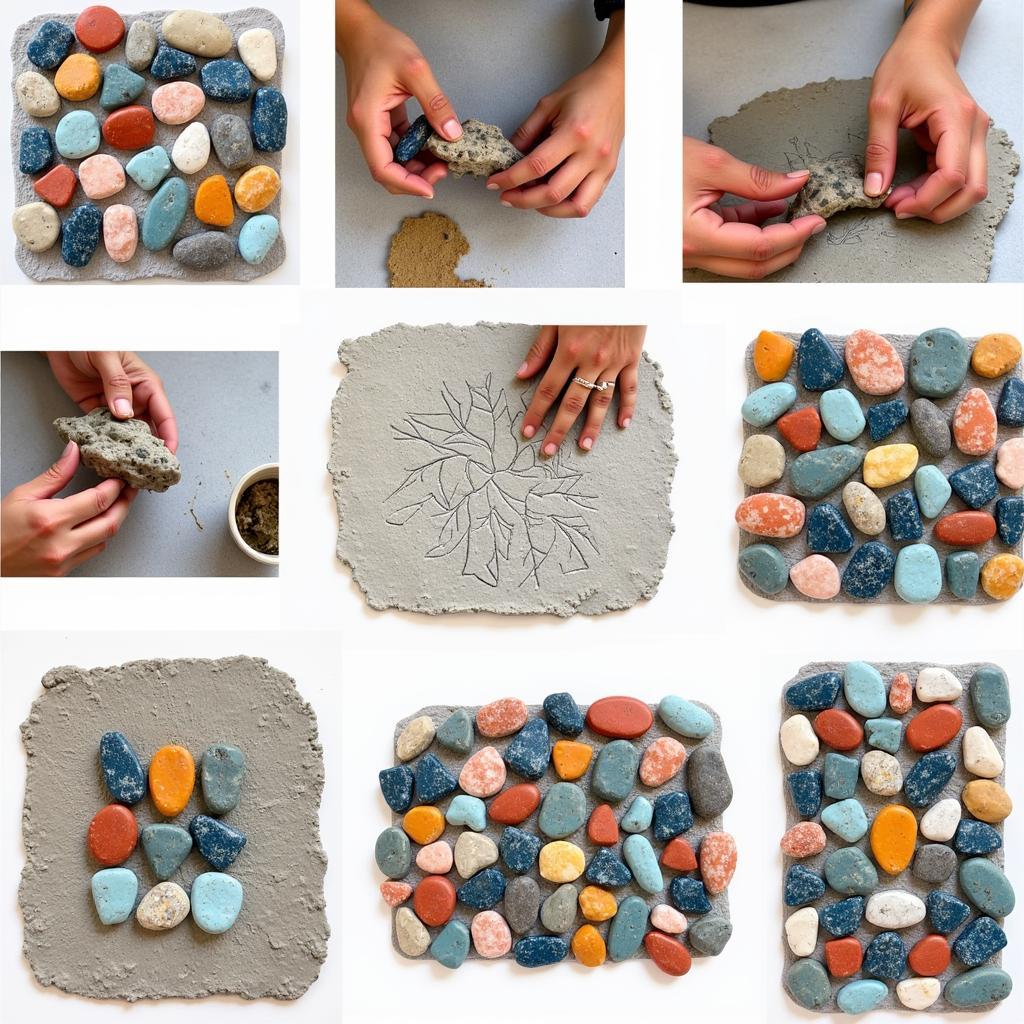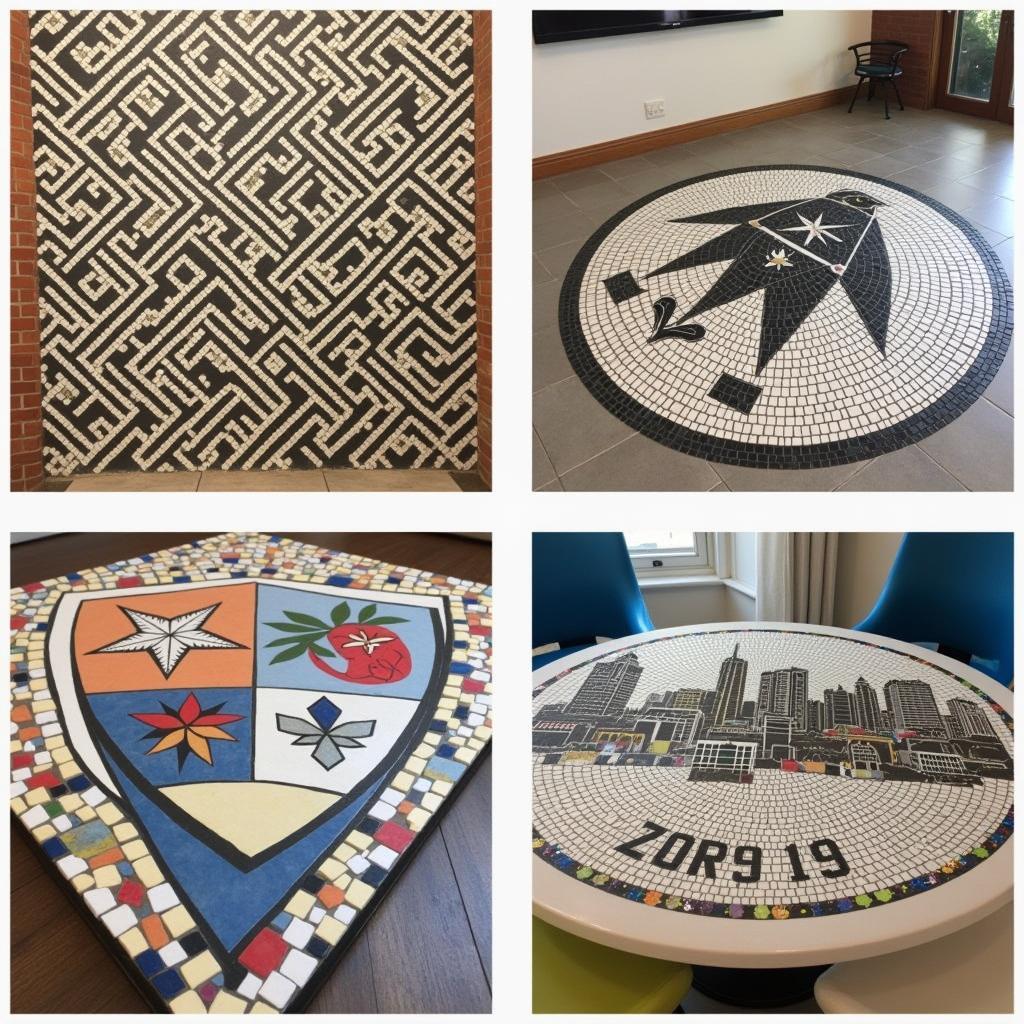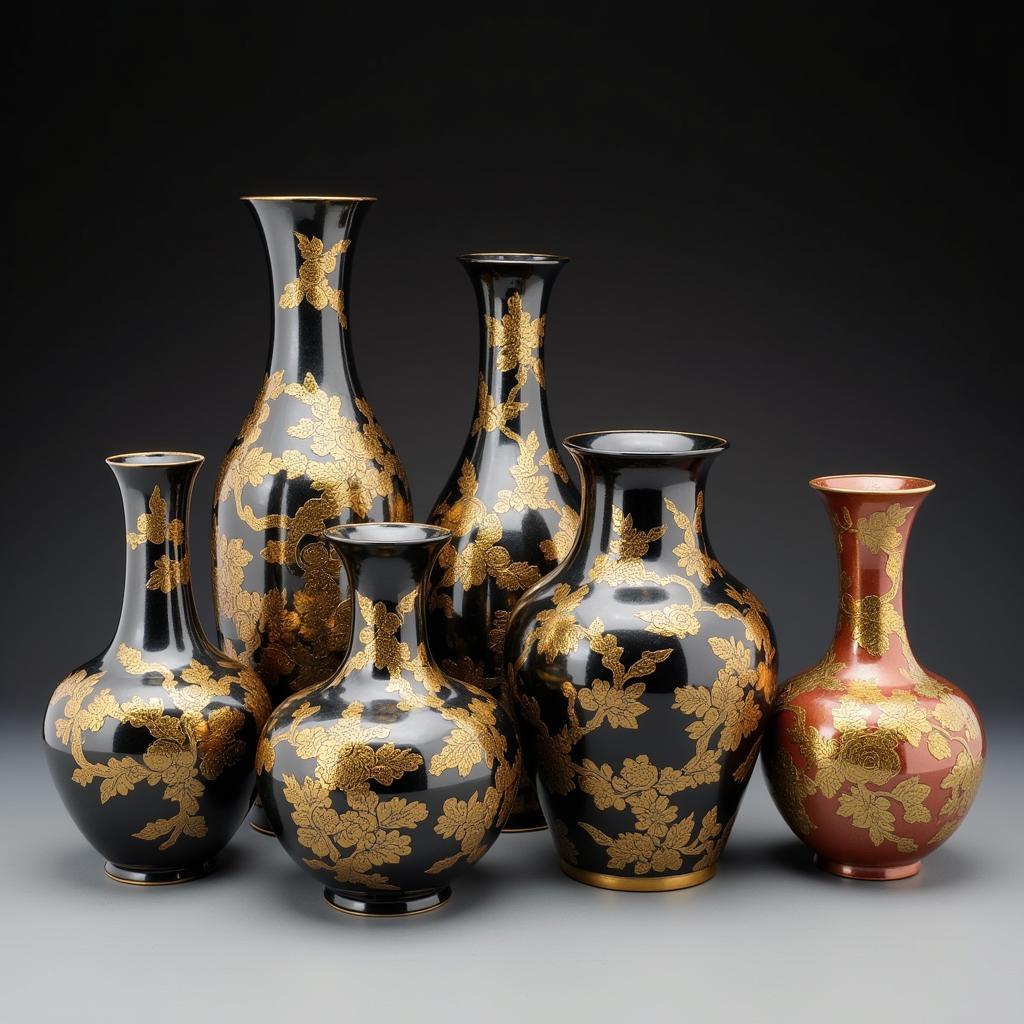Unveiling the Beauty of Stone Art Mosaics
Stone Art Mosaics have captivated art enthusiasts and interior designers for centuries. From ancient Roman villas to modern-day homes, these intricate artworks add a touch of timeless elegance and bespoke artistry. This article delves into the fascinating world of stone mosaics, exploring their history, creation process, diverse applications, and the enduring appeal that keeps them relevant in contemporary art and design. After reading this, you might even be inspired to create your own! See how you can incorporate affordable garden art into your mosaic designs.
A Journey Through Time: The History of Stone Mosaics
Mosaics, in their simplest form, are artworks created by assembling small pieces of colored stone, glass, or other materials to form a decorative image or pattern. Stone has been a favored material for this art form since antiquity. Evidence of early pebble mosaics dates back to the 8th century BC in Asia Minor. The ancient Greeks and Romans elevated the craft, using meticulously cut stone tesserae (small pieces) to depict mythological scenes, geometric patterns, and even portraits, adorning floors, walls, and ceilings of their opulent villas and public spaces. These early examples showcase the incredible skill and patience required to create such intricate designs, setting the stage for the mosaic art we admire today.
Creating Stone Masterpieces: The Process
Creating a stone art mosaic is a meticulous process that demands both artistic vision and technical skill. It begins with selecting the right stones, considering color, texture, and durability. Common choices include marble, travertine, slate, and granite, each offering a unique aesthetic. The stones are then cut and shaped into the desired tesserae, which can range from small, uniform squares to irregular shapes for a more organic feel. These pieces are carefully arranged and adhered to a substrate, often a concrete or mortar base, following a pre-determined design. The final step involves grouting the spaces between the tesserae to create a cohesive and durable surface. The entire process is a testament to the artist’s dedication and the inherent beauty of natural stone.
 Creating Stone Mosaic Process
Creating Stone Mosaic Process
From Walls to Walkways: Applications of Stone Art Mosaics
Stone mosaics are incredibly versatile and can be integrated into a variety of spaces, both indoors and outdoors. From stunning art for outside walls to elegant flooring, the possibilities are endless. They can be used to create decorative wall panels, intricate floor designs, captivating backsplashes in kitchens and bathrooms, and even eye-catching garden features. Their durability makes them suitable for high-traffic areas and outdoor installations, adding a touch of artistic flair to patios, walkways, and swimming pool surrounds.
What makes stone mosaics so appealing?
Why do stone mosaics continue to fascinate and inspire? Their enduring appeal lies in their unique blend of artistic expression and practical durability. The natural variations in stone color and texture create a sense of depth and visual interest that cannot be replicated with other materials. Each mosaic is a one-of-a-kind creation, reflecting the artist’s vision and the unique characteristics of the stones themselves. Furthermore, stone mosaics are incredibly long-lasting, resistant to fading, and relatively easy to maintain, making them a worthwhile investment for both residential and commercial spaces. Are you thinking of adding a touch of history to your home decor? Consider incorporating an ap art history timeline inspired mosaic design.
 Stone Mosaic Applications
Stone Mosaic Applications
Modern Interpretations and Trends
While rooted in ancient traditions, stone art mosaics continue to evolve, embracing contemporary designs and innovative techniques. Artists are experimenting with new materials, incorporating glass, metal, and even recycled materials alongside stone to create unique textures and visual effects. Modern mosaic designs often feature abstract patterns, bold geometric shapes, and personalized imagery, reflecting the evolving tastes and preferences of contemporary art enthusiasts. The fusion of traditional craftsmanship with modern aesthetics ensures that stone mosaics remain a relevant and captivating art form for generations to come.
How do I choose the right stones for my mosaic?
Choosing the right stones for your mosaic project depends on several factors, including your desired aesthetic, the location of the installation, and your budget. Softer stones like limestone and marble are easier to work with but may be less durable for high-traffic areas. Harder stones like granite and slate are more resilient but require specialized tools for cutting and shaping. Consider the color palette and texture you want to achieve and research different stone types to find the best fit for your project. Check out the amazing potential of art with shells to add a unique touch to your mosaic.
 Modern Stone Mosaic Designs
Modern Stone Mosaic Designs
Conclusion
Stone art mosaics offer a unique blend of artistry, durability, and timeless appeal. From ancient civilizations to modern-day homes, these intricate artworks continue to captivate and inspire. Whether you’re looking to enhance your interior design, create a stunning outdoor feature, or simply appreciate the beauty of natural stone, stone art mosaics provide a versatile and enduring art form that transcends time and trends. For those seeking unique garden accents, cat garden art can be a charming addition.
FAQ
- How do I clean a stone mosaic?
- Can I install a stone mosaic outdoors?
- What is the average cost of a stone mosaic?
- What tools do I need to create a stone mosaic?
- Where can I find stone mosaic supplies?
- What is the lifespan of a stone mosaic?
- Can I repair a damaged stone mosaic?
For support, contact us at Phone: 02462573573, Email: danteum@gmail.com Or visit us at Savico Megamall, 7-9 Đ. Nguyễn Văn Linh, Gia Thụy, Long Biên, Hà Nội 10000, Việt Nam. We have a 24/7 customer service team.




